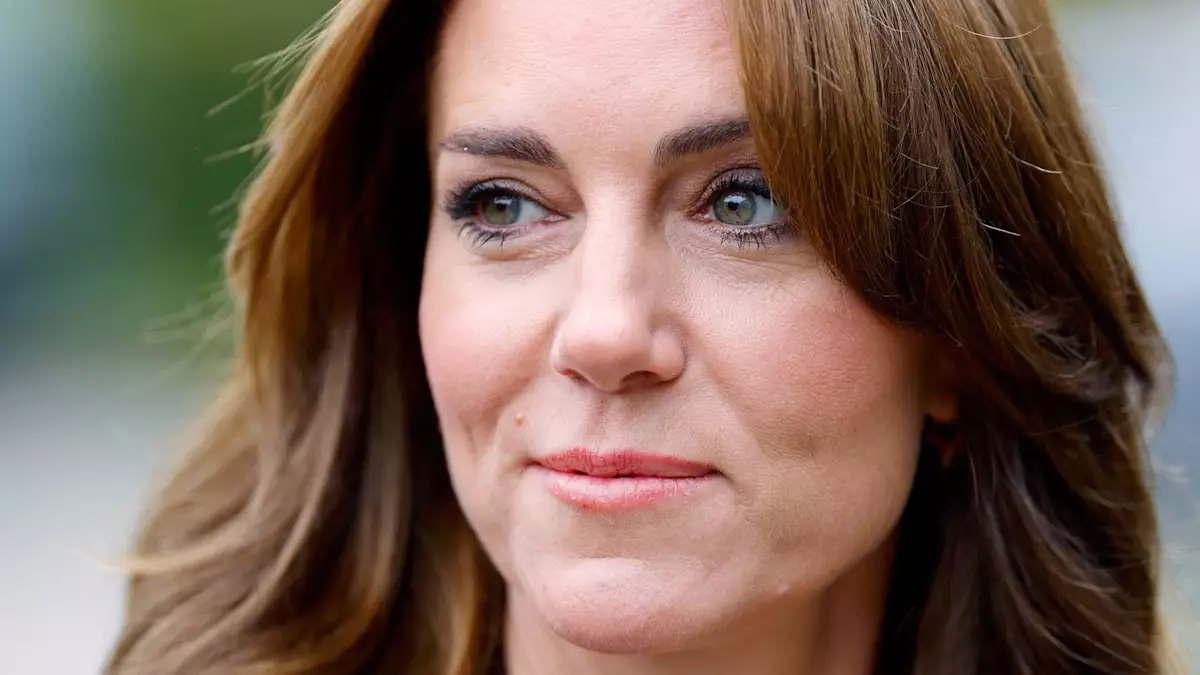May has truly been a transformative month for Princess Kate, marking significant milestones that not only reflect her personal journey but also her evolution within the royal family. One of the highlights was her historic venture to Scotland, where she had the honor of naming a Royal Navy vessel. This daunting task, emblematic of her rising stature among senior royals, signals confidence and a deepening commitment to her royal duties. Alongside this milestone, Kate attended her first garden party since her cancer diagnosis, a poignant reminder of resilience and restoration in the face of personal trials.
Such moments are not merely ceremonial; they serve as indicators of a royal reinvention. The pressure on Kate to resonate with the public and embody the values of the monarchy is palpable, and her recent appearances underscore her growing sense of identity.
Stylish Significance: The Nautical Palette
For this momentous occasion, Princess Kate opted for a striking navy blue and white coat dress by Suzannah London, meticulously designed with a nautical inspiration. This choice of attire was far from coincidental; it was steeped in symbolism. Fashion stylist Sian Clarke astutely pointed out that blue, particularly in a royal context, plays a crucial role in communication. The color’s inherent qualities of calmness and strength reflect not only her personality but also her capabilities as a member of the royal family.
The psychological implications of color in fashion cannot be understated. By donning navy blue, Kate broadcasts a message of stability—essential for a princess assuming new responsibilities. Every aspect of her outfit, from the clean lines to the classic silhouette, speaks to her poise, offering the public a sense of familiarity and trust.
The Rising Tide of Royal Fashion Diplomacy
Princess Kate’s sartorial choices are exemplary of a broader trend among the royals, where fashion does not solely serve aesthetic purposes but also acts as a communicative tool. Princess Eugenie, for instance, mirrored Kate’s thoughtful approach by wearing a sophisticated navy sleeveless dress to mark her new role as a mentor within The King’s Foundation’s ’35 under 35′ network. The cohesion in their wardrobe choices suggests an understanding among the younger royals of the narrative their clothes can craft.
In many ways, fashion diplomacy is a new frontier for the royal family. As seen with Eugenie’s cinched waist dress paired with champagne-hued heels, these choices reveal the intention to convey strengths and capabilities in their evolving roles. This visual alignment among the younger royals signals unity and a shared approach to addressing modern royal responsibilities.
A Playful Contrast: The Styles of Sophie and Camilla
Interestingly, this focus on strong, reassuring hues stands in stark contrast to the recent fashion statements made by Duchess Sophie and Queen Camilla. Both have opted for polka dots, a pattern that traditionally conveys a sense of whimsy and light-heartedness—an intentional deviation from their usual sophisticated, understated wardrobes. This playful choice generates curiosity about the nuances of royal fashion statements. Are they signaling a return to a more approachable image for the monarchy, or is it merely a seasonal trend?
The juxtaposition of these styles complicates our understanding of the royal narrative, hinting at the multifaceted personalities each member possesses. As the royal family navigates its modern role—more visible and more scrutinized than ever—each choice conveys messages that extend beyond mere aesthetics.
Continuous Evolution of Royal Identity
As the roles within the royal family evolve, so too will the fashion decisions of its members. The importance of these choices is magnified in our visually-driven culture, where the narrative is often shaped by what we see. Princess Kate, with her carefully curated wardrobe, demonstrates a keen awareness of the impact of fashion on public perception. Each dress and each occasion carries the weight of history and expectation, making every appearance a powerful statement about her identity and role.
In this context, the royal wardrobe is no longer just fabric; it becomes a canvas reflecting personal struggles, public expectations, and the ongoing transformation of monarchy itself. As we look forward to their future outfits, one thing is certain: each choice will continue to speak volumes about who they are and the values they strive to represent.

